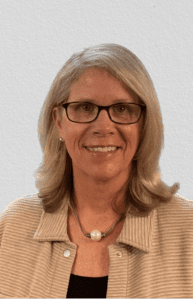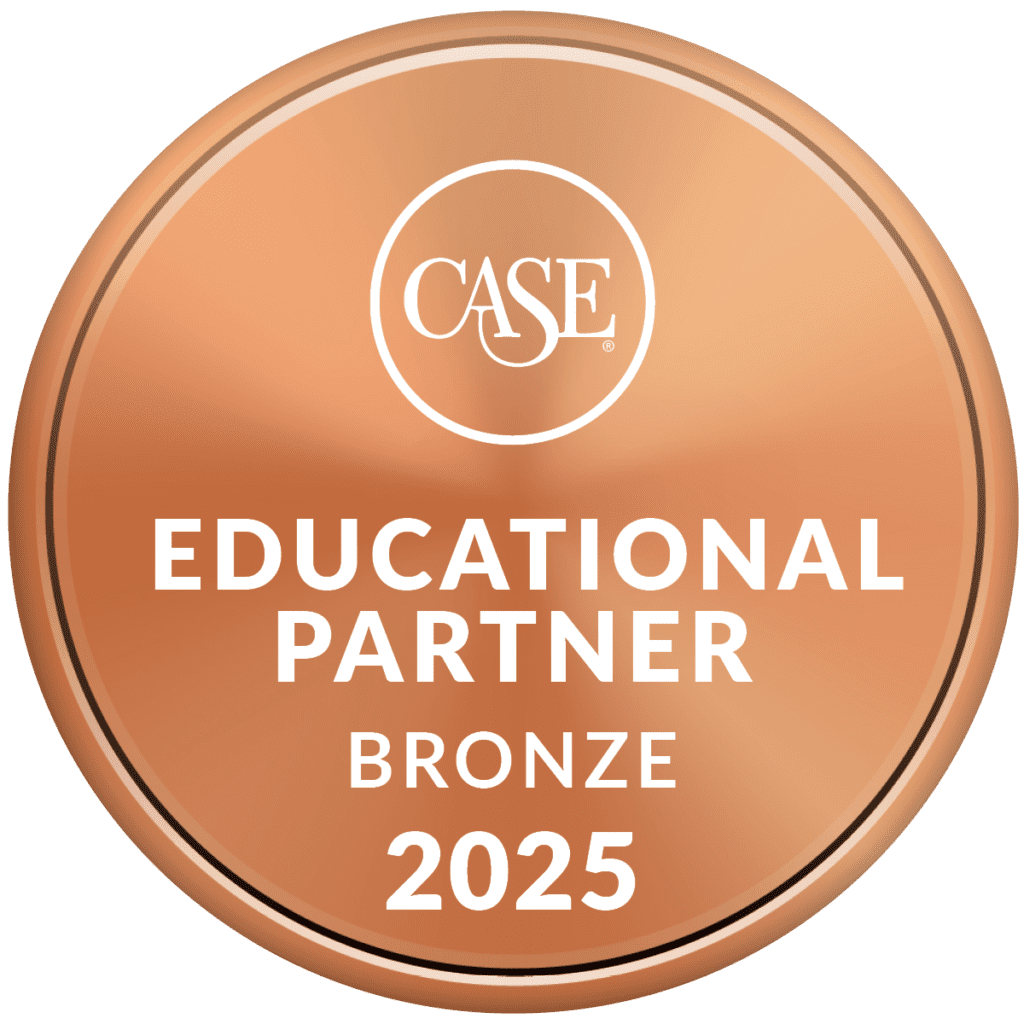

From the desk of
Jaci A. Thiede ¦ Partner
The twist is that he was a completely “non-traditional” candidate for a major gifts position when we hired him. He had no direct professional fundraising or even sales experience. However, he had: 1) consistently expressed his desire to enter the development profession; 2) demonstrated a deep belief in and passion for the mission of the organization through many years of service in a completely unrelated department; and 3) a lengthy history of volunteer service with various non-profit organizations.
He also had skills that truly matter in major gift work: emotional intelligence, genuine curiosity about people, excellent listening skills, the ability to adapt and learn quickly, and the rare ability to connect deeply with people, no matter their background. All those qualities and characteristics were enough for us to take a calculated risk and hire him. The risk was well worth it.
I share this story because, in the competitive world of nonprofit fundraising, conventional wisdom often leads us—me included—to seek candidates with proven track records in closing major gifts. We look for candidates who can hit the ground running, who speak our fundraising language, and who know exactly how to navigate the delicate dance of donor cultivation, solicitation, and stewardship. All that makes good strategic sense.
COVID has changed the hiring landscape for major gift officers over the past five years. It remains very much a “seller’s market” when it comes to recruiting and retaining top-notch major gift officers. No doubt hiring experienced fundraisers who can successfully navigate the development landscape holds tremendous value. However, in today’s marketplace, it’s crucial to remember that while the technical knowledge of fundraising can be learned, the intrinsic qualities that make someone truly exceptional at building meaningful donor relationships are much harder to teach.
I encourage anyone seeking to recruit major gift talent to remain open to candidates who offer diverse gifts, talents, and experiences. Of course, you should still pursue experienced major gift officers, but also stay receptive to considering unconventional candidates if they demonstrate:
- A genuine connection to your mission and the communities you serve.
- Very strong interpersonal skills and emotional intelligence.
- The ability to listen deeply and respond/follow up thoughtfully.
- Curiosity, adaptability, and a commitment to continuous learning.
- A track record of building lasting relationships in their previous work.
Happy March Madness!
9 Tips for Thank-Yous That Make Donors Feel Valued
The Love Project, a recent report from the Institute for Sustainable Philanthropy, identifies several evidence-based strategies that fundraisers can use to help donors cultivate genuine feelings of love for the causes they support. The crucial point is that fundraisers must also experience this love through gratitude. This will enable you to comprehend what drives your donors to give and to express your thanks in a way that feels deeply rewarding and reciprocal.
9 Tips
Use Sensory Storytelling to Evoke Feeling
Combining sensory descriptions with a photograph will create a scene and immerse donors in a moment by narrating a compelling story about the impact of their contributions.
Don’t Keep Donors at Arm’s Length
Treat supporters like close, valued partners in a thank-you letter. Consider expressing gratitude from the many people working behind the scenes, as donors want to feel included in the mission’s work.
Tie Your Thank-Yous to Your Campaigns
Always reference the appeal that prompted the gift in your donor acknowledgments.
Abide by a 48-Hour Rule
The rule of thumb is that you have 48 hours after receiving a charitable gift to send a thank-you note. Missing that two-day window substantially lowers the chance that the donor will give again.
Don’t Use A.I. Without Careful Editing
A.I. programs like ChatGPT could be useful to spark a feeling of gratitude for the writer of your thank-you letters, but the output will not be good enough to send because it will lack an authentic person-to-person connection.
Adapt Your Language Over Time
Every long-term relationship starts with getting to know each other, so earlier thank-you letters should look very different from the ones you send after years of loyal giving.
Tailor Your Thanks to Donors’ Communication Preferences
For instance, you should thank online donors as soon as they click “donate.” Ask donors for their communication preferences and then follow them.
Don’t Send Trinkets
It’s about being aware of our resources, but it’s also about being mindful of how our donors perceive our use of them.
Finish With a Flourish
The letter should be signed by the person in your organization who has the strongest connection to its content. This could be a program leader, CEO, board member, or a beneficiary of your group’s services sharing their story. COP, 3-6
Rethinking Big Gifts 5 Years After the Pandemic
Five years ago, in the early days of Covid-19’s arrival, it would have been impossible to predict how the era of pandemic lockdowns would ultimately upend the status quo of fundraising. The pandemic reshaped how donor relationships are forged and major gifts are won. Many of these changes were overdue, say experienced leaders, and they could even be positive in the long run.
Here are some key ways to attract major gifts in a post-pandemic world.
Take a Hybrid Approach to Donor Meetings
Video calls have become the default in donor outreach. However, there are tradeoffs. A hybrid approach is arranging an in-person visit after getting to know a prospect online or to keep the relationship going.
Throw Mission-Aligned Events
Black-tie galas are out. These days, your wealthiest supporters are more likely to want to see your group in action, which can be done in ways that are more innovative and mission-focused than hosting an exclusive party.
Connect with Donors’ Values
Many wealthy philanthropists who became richer during the pandemic are eager to do more to tackle systemic inequities. Trust-based philanthropy is gaining importance, and unrestricted donations have risen among philanthropists inspired by MacKenzie Scott’s approach of no-strings-attached giving.
Use Multiyear Campaigns to Inspire New and Existing Supporters
The multiyear campaign attracted new supporters and inspired existing donors to augment their giving, resulting in an increase in gifts over the $25,000 threshold
Enhance Stewardship With AI
Generative AI has become an indispensable tool for streamlining operations at nonprofits since ChatGPT hit the market in 2022. Fundraisers can judiciously use the new technology while still satisfying donors’ needs for authenticity and personal connection, the experts say. The technology also enables staff to increase the number of donors they can cultivate. COP, 3-11
Philanthropy Can Play Crucial Role on Climate Issues
A report from the Milken Institute finds that philanthropic capital has significant potential to maximize impact on climate and environmental issues. According to the institute, although climate disasters are increasing, only about 2% of global philanthropic contributions are allocated to climate mitigation.
According to the report, four key areas of giving have emerged as both urgent and underfunded: deforestation; food systems—which include livestock, regenerative agriculture, and food waste; oceans, which encompass fisheries, maritime shipping, and the conservation and restoration of coastal habitats; and communications and outreach, covering audience research, effective messaging, community and media engagement, and K-12 education.
When establishing a strategy for philanthropic funders, the report suggests breaking down complex issues into manageable topics, avoiding the attempt to check too many boxes, funding initiatives while utilizing data, prioritizing long-term funding over short-term gains, and considering the full spectrum of philanthropic financial models. Regarding the operation of an ecosystem, the report advises combining and amplifying philanthropic efforts whenever possible, sharing knowledge with others, avoiding assumptions about the needs or wishes of individuals with a common material interest in a specific issue or project, fostering partnerships that enhance capacity, and balancing various perspectives.
The report, Priorities for Strategic Climate and Environmental Philanthropy, can be found here (PDF). PND, 2-9
We Know Atlanta Nonprofits
A Fresh Approach to Fundraising
Our services aren’t cookie cutter. We don’t operate with a boilerplate, merely changing names and locations. We craft each and every service we provide to match your organization’s unique needs, wants and abilities. We work hard and expect you to do the same. Together we can help you transform your institution, your fundraising, and the community you serve.
Whether your need is in Capital Campaign, Annual Fund Campaign, Major Gifts, Leadership Annual Giving, Planned Giving or all of the above, we take a fresh approach to nonprofit fundraising.


